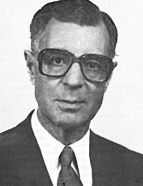

J. S. da Silva Dias can be considered one of the most important historians of the 20 th century, especially at university level, at a time when historiography and the teaching of history were going through uninteresting times. There was a notable institutional straitjacket imposed by the Estado Novo regime, but also the persistence of a factual and “ narrative ” historiography (usually classified, in a simplistic and ambiguous way, as “ positivist ” ) of an “ academic ” type, which did not seek to integrate historical events into the complex economic, social, political and cultural reality, nor to interpret them with the support of new concepts from the social sciences. A directly or indirectly ideological historiography also emerged, either “pro-government” or “opposition”, a form of self-censorship that excluded certain areas from university history (for example, social history in its global perspective) and more recent periods (from liberalism to authoritarian/totalitarian states and modern democracies). Suffice it to say that history students at Portuguese universities did not normally learn history beyond the 17 th century, or at most the 18 th century. Silva Dias broke down these barriers, albeit with the difficulties and contradictions inherent in anyone who seeks to change from within the “ system ” .
His place of birth (in Arcos de Valdevez, on 9 February 1916), his origins and his education are, in the traditional order and, curiously, his entire life as a student, historian and university professor of history (and philosophy) developed more slowly than he would have liked and even, so to speak, in a “delayed” manner. The son of a veterinarian, António Cândido Machado da Silva Dias, and on his mother’s side, Angelina Maria de Araújo Dias, from a noble family, the House of Amiosa, in Valadares do Minho (according to the autobiographical data he wrote in his Curriculum Vitae, in 1969), after completing his primary education, which he began late in his hometown, he only continued his studies “at the age of 16”. However, as he completed his secondary education in three years, he enrolled in law in 1934, at the normal age of a student entering university, i.e. 18.
This work is financed by national funds through FCT - Foundation for Science and Technology, I.P, in the scope of the projects UIDB/04311/2020 and UIDP/04311/2020.
